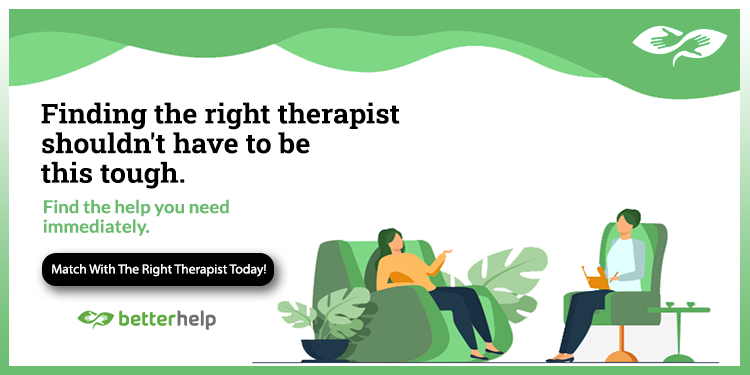The Emotional Cost of Being Hyper-Independent
Emotional Cost. Do you pride yourself on rarely needing help, handling challenges alone, or maintaining complete self-sufficiency regardless of circumstances? Perhaps you find it nearly impossible to ask for support even when struggling, feel uncomfortable when others offer assistance, or experience an almost visceral aversion to appearing vulnerable or dependent in any way. Maybe you’ve constructed your entire life around ensuring you never have to rely on anyone—maintaining elaborate systems of self-sufficiency that require enormous energy but protect you from the perceived danger of needing others. If these patterns sound familiar, you’re experiencing a specific adaptation often praised as strength but actually carrying significant emotional, relational, and even physical costs that may be undermining your wellbeing despite appearing as admirable self-reliance.
This hyper-independence rarely develops without cause. It typically forms through experiences where dependence on others proved painful, disappointing, or even dangerous rather than supportive and nourishing. Perhaps early attempts to rely on caregivers for emotional or practical needs met with consistent disappointment, teaching your system that self-sufficiency was the only reliable strategy for having needs met. Maybe you observed important others being rejected, criticized, or burdened when expressing vulnerability, creating unconscious templates where independence appeared to be the only safe approach to relationship. Or perhaps you actually assumed care-taking responsibilities beyond your developmental capacity, creating premature self-reliance that became mistaken for inherent strength rather than adaptive necessity.
Your body maintains this independence in specific physiological ways. You might notice characteristic physical bracing or tension—muscles prepared for handling everything alone rather than allowing the relaxation that comes with shared responsibility. Your breathing likely becomes shallow and restricted when opportunities for receiving help arise, reflecting the threat response that activates around potential dependency. You may find yourself literally taking a step back when others offer assistance, your body physically creating distance that mirrors your emotional resistance to support. These somatic patterns aren’t random but reflect how deeply the avoidance of dependency has become embodied, creating automatic physical responses that maintain separation regardless of conscious intention.

The most significant costs of hyper-independence extend far beyond the exhaustion of doing everything yourself into profound impacts on your capacity for genuine intimacy and vulnerability. When self-sufficiency becomes rigid identity rather than flexible capacity, authentic connection becomes impossible—creating relationships where aspects of genuine need, uncertainty, and vulnerability remain hidden behind capability and competence. This emotional isolation often occurs despite being physically surrounded by people who care but cannot genuinely connect with your authentic experience because your self-protective independence prevents the very vulnerability that creates true intimacy.
What makes this pattern particularly difficult to recognize as problematic is how consistently our culture celebrates and reinforces it. We often praise those who “never need help,” admire the ability to “handle everything independently,” and generally frame hyper-independence as admirable strength rather than potentially harmful adaptation. This social reinforcement obscures the crucial distinction between healthy self-reliance as capacity and rigid independence as compulsion, making it challenging to recognize when self-sufficiency has crossed from empowering ability into limiting defense against genuine vulnerability and connection.
Emotional Cost – Healing Exercise #1: The Independence Cost Analysis
Begin bringing awareness to the specific impacts of your hyper-independence through honest reflection: What tangible costs do you pay for maintaining complete self-sufficiency—perhaps in terms of energy expenditure, stress levels, or limited time for restorative activities? What emotional costs accompany your independence—maybe isolation, pressure to maintain capability, or disconnection from authentic vulnerability? What relational impacts does your self-sufficiency create—possibly limiting intimacy, creating imbalanced connections, or preventing the experience of being genuinely seen in your wholeness? This comprehensive assessment helps clarify the actual price of hyper-independence, bringing consciousness to costs that often remain unacknowledged amid praise for self-reliance.
Treatment of the inner child
Emotional Cost – Healing Exercise #2: The Micro-Dependency Practice
Moving from rigid independence to flexible interdependence benefits from graduated rather than dramatic shifts. Develop greater capacity for appropriate dependency through intentional micro-practices: Each day, identify one small opportunity to receive rather than provide or ask rather than solve independently. This might involve accepting an offer of practical help, making a minor request, or simply sharing a challenge without immediately presenting your solution. Notice the discomfort that arises—perhaps anxiety, shame, or the impulse to quickly reciprocate—and stay with these feelings without immediately retreating to independence. This progressive approach respects both your desire for connection and the legitimate protection that developed through actual experience, creating sustainable expansion rather than overwhelming your system with more vulnerability than feels manageable.
Emotional Cost – Healing Exercise #3: The Beneath Independence Exploration
Hyper-independence often serves as sophisticated protection for deeper vulnerabilities or unmet needs. Develop understanding of what your self-sufficiency might be guarding through compassionate inquiry: Find a quiet space where you won’t be disturbed. Close your eyes and imagine yourself accepting help or expressing genuine need in a specific situation where you’d typically maintain independence. Notice what emotional response emerges—perhaps fear, shame, grief, or anger. Gently ask this feeling: “What are you protecting me from? What past experience are you helping me avoid repeating?” Allow whatever arises to be acknowledged without judgment. This exploration helps create consciousness around the intelligent protective function your independence serves, developing compassion for both its purpose and its limitations.
Healing hyper-independence involves understanding the crucial difference between self-sufficiency as capacity and independence as identity. Healthy self-reliance involves having genuine abilities to meet many needs independently while maintaining flexibility to receive support when appropriate—a balanced approach that honors both personal capability and human interconnection. Rigid independence, by contrast, involves avoiding vulnerability and dependency regardless of circumstances—a compulsive self-protection that sacrifices connection and authentic expression for the security of self-containment. This important distinction helps transform your relationship with independence from unconscious defense to conscious choice, allowing self-sufficiency when genuinely preferred while creating space for the vulnerability and interdependence that enable true intimacy.
Your physical practices significantly impact healing from hyper-independence. Many people caught in rigid self-sufficiency maintain somatic patterns of containment and separation—chronic tension that literally holds their experience within rather than allowing the physical openness that supports genuine exchange. Practices that invite different physical experiences—perhaps conscious relaxation of habitually contracted areas, breathing exercises that encourage the full expansion and release of your chest and abdomen, or movement that emphasizes receptivity rather than constant output—help create embodied alternatives to physical self-containment. As your body experiences different ways of being physically present, your emotional relationship with vulnerability and dependency naturally begins to shift as well.
The timeline for this transformation deserves particular patience and compassion. If independence has been your primary safety strategy throughout life, the prospect of even appropriate vulnerability and dependency naturally activates legitimate protective responses based on actual historical experiences. Each small step toward more flexible self-reliance represents significant courage, even when these changes might seem minor from an external perspective. Understanding the gradual nature of this development helps maintain motivation through a process that inevitably includes both progress and temporary retreats to familiar independence when relationship dynamics or vulnerability opportunities activate established protection systems.
Remember that healing hyper-independence doesn’t require abandoning the genuine strengths and capacities you’ve developed. The goal isn’t to replace self-sufficiency with dependency but to transform rigid independence into flexible choice—developing the ability to rely on yourself when preferred while allowing appropriate vulnerability and interdependence when beneficial. This integration honors both the legitimate capabilities you’ve cultivated and the fundamental human need for authentic connection that requires some degree of mutual dependency to fully satisfy. As balance develops between these aspects, you may discover that your hard-won self-reliance actually becomes more genuinely empowering when chosen rather than compelled, existing alongside rather than instead of the capacity for meaningful vulnerability and connection.

Keywords: Emotional Cost, Anxiety, polyvagal theory, gestalt therapy, psychotherapy, parents, parental trauma, somatic experiencing, Licensed therapist near me in Manhattan NYC, Affordable therapy services in New York State, Holistic psychotherapy sessions in NYC, Somatic Experiencing therapy for trauma recovery in New York City, NARM therapy in Brooklyn, Licensed couples therapy in Manhattan, Gestalt therapy near me in NYC, Marriage counseling in Queens NYC, Therapy for anxiety treatment in NYC, Experienced psychotherapist in New York, Licensed psychotherapist near me in NYC, Somatic Experiencing therapy sessions in New York, Trauma therapy and counseling in Manhattan, Gestalt therapy sessions in New York City, Therapy sessions for emotional regulation in New York, Trauma therapy near me in Brooklyn New York, Licensed mental health therapist in Manhattan NYC, Depression therapy in New York, New York City therapist experienced in PTSD treatment
Contact us: Feel and Heal Therapy Office
For companies: Creative Manager
Why It’s Necessary to Bury Expectations of Parents







